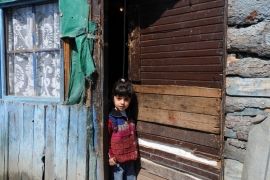NORTH MITROVICA, Kosovo — Displaced by conflict and stranded by bureaucratic inertia, dozens of Roma families remain on toxic land 10 years after they were relocated there by the United Nations following the Kosovo war.
Osterrode Camp and Chesmin Lug Camp were established by the United Nations High Commissioner for Refugees in 1999 as a temporary measure, when the 9,000-member Roma or gypsy neighborhood on the southern shore of the Ibar River was burnt down by Albanians in the dying days of the Kosovo conflict. The Albanians had accused the Roma of collaborating with the Serb army, a charge the Roma dismiss as unfounded.
Whatever the truth behind the charges and denials, almost everyone agrees that moving Roma families near the now closed Trepca mining and smelting complex, onto land highly contaminated with lead, zinc, arsenic and other metals, has resulted in severe health problems in the community.
When the World Health Organization tested the Roma's blood for lead in 2004, the readings for 90 percent of the children were off the scale, higher than the medical equipment was capable of measuring. Such children fall into the category of "acute medical emergency" and require immediate hospitalization.
Instead they have remained in the camps, ingesting lead through the air, the dirt they play in and through their clothes dusted with lead tailings while drying on laundry lines. Even before their birth, lead enters their bodies from drinking water consumed by their mothers.
